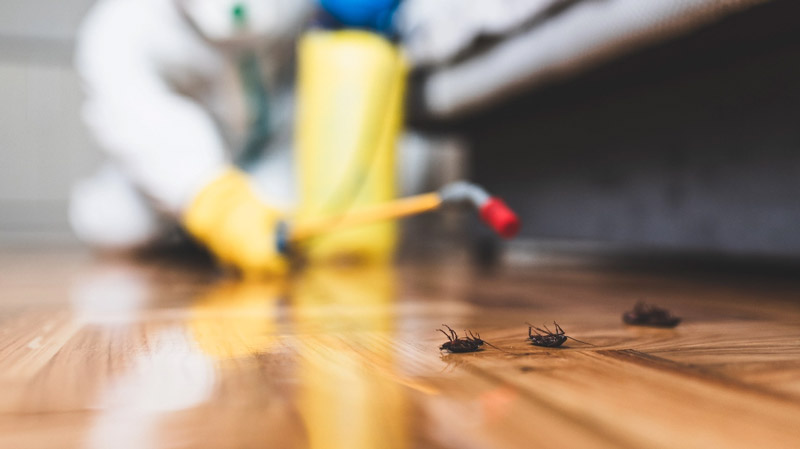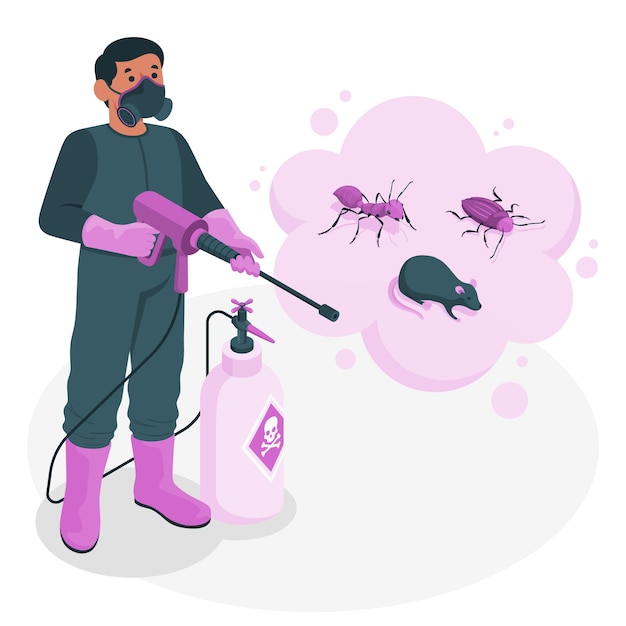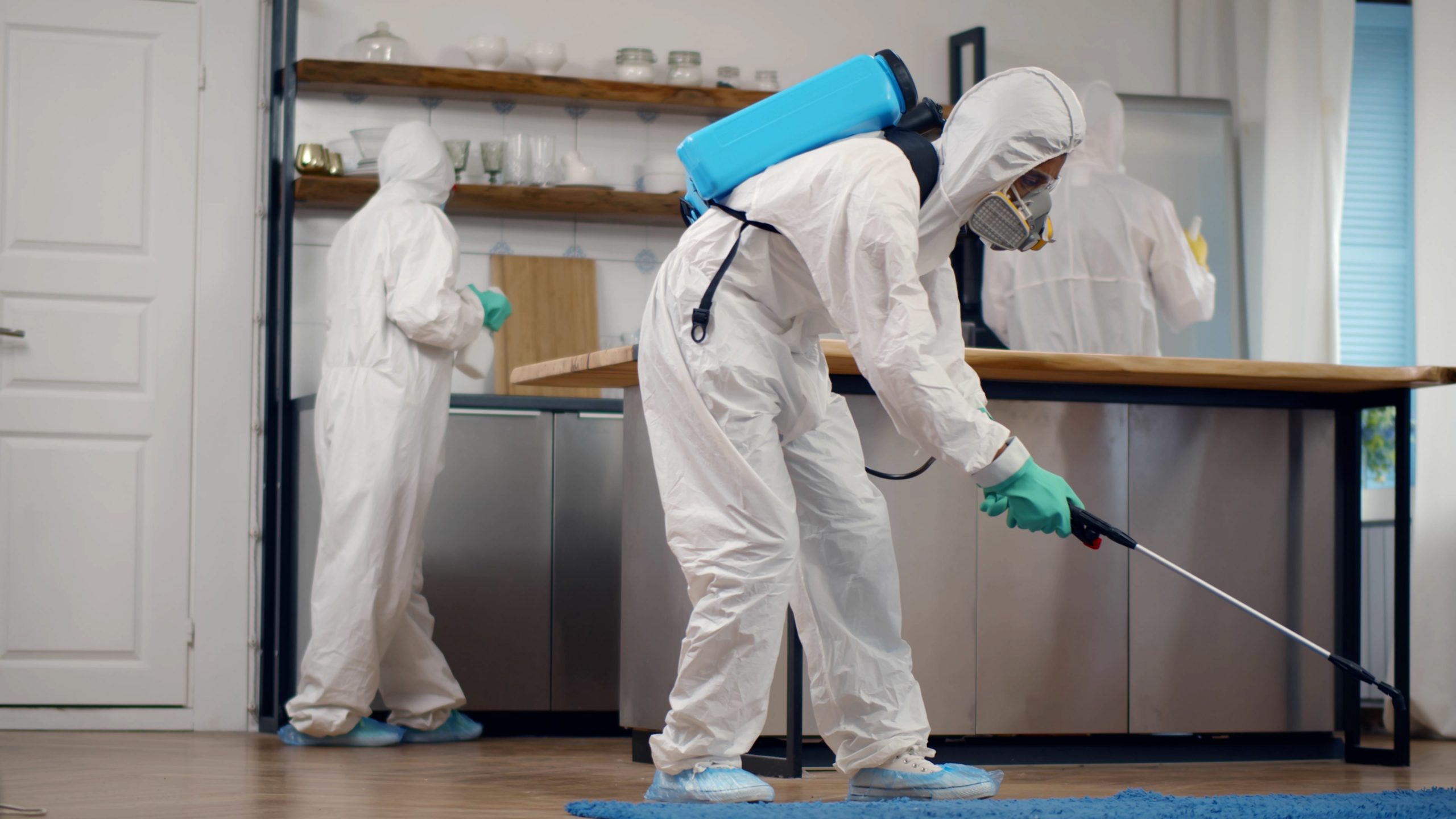Safe and Dependable Bug Control for Lasting Security
Efficient insect management needs a diverse strategy that stabilizes environmental stability with the demand for efficient insect suppression. The nuances of these approaches might not be promptly clear, triggering a more detailed assessment of the practices that can lead to lasting bug control results.
Comprehending Insect Control Approaches
Insect control includes a selection of techniques intended at handling and removing undesirable insects and rats that can threaten both wellness and residential or commercial property. Understanding these approaches is vital for efficient bug monitoring.
The primary categories of insect control techniques include mechanical, biological, and chemical techniques. Mechanical methods entail physical barriers and traps to avoid parasite entrance and capture unwanted varieties. Making use of displays on windows or using sticky traps can substantially reduce insect populations without introducing damaging substances - exterminator coquitlam.

Chemical insect control is usually one of the most recognized method, utilizing chemicals to get rid of pests. These chemicals can be efficient yet must be utilized with caution to avoid damaging effects on non-target species and the environment.
Advantages of Eco-Friendly Solutions
Just how can environment-friendly solutions transform bug control practices? The adoption of green insect control methods provides many benefits, substantially enhancing the performance and safety of pest management.

Another advantage is the favorable effect on neighborhood biodiversity. Environment-friendly options are designed to target particular pests while preserving beneficial bugs and wild animals, promoting a well balanced ecological community. This method straightens with the expanding consumer demand for lasting practices, boosting the credibility of parasite control carriers.
Integrated Insect Administration Methods
The application of environmentally friendly remedies naturally leads to the fostering of Integrated Bug Monitoring (IPM) strategies, which even more boost insect control efficacy. IPM is a holistic method that combines multiple techniques to take care of pest populations while decreasing environmental effect. This technique stresses making use of organic, cultural, mechanical, and chemical controls, making sure a balanced and lasting method of bug management.
One fundamental aspect of IPM is the complete evaluation of parasite task and ecological problems. By monitoring insect populations and recognizing their life cycles, experts can implement targeted interventions that interrupt the insect's environment or lifecycle, minimizing dependence on chemical pesticides. Furthermore, cultural methods such as crop turning and environment control can significantly reduce pest facility and reproduction.
Another crucial element is the use of biological control representatives, such as helpful pests or bacteria, which can normally subdue bug populations. When chemical applications are necessary, IPM prioritizes using low-risk pesticides and applies them uniquely, reducing exposure to non-target microorganisms and humans.
Including IPM methods not just improves pest control performance yet likewise advertises a safer ecological community, lining up with the expanding need for lasting practices in pest monitoring.
Safe Practices for Home Owners
Recognizing the relevance of risk-free methods in insect control can empower home owners to efficiently take care of bug problems while protecting their health and wellness and the setting. Executing safe approaches and safety nets is vital in lessening direct exposure to harmful chemicals.
House owners should first analyze their environment for problems that bring in parasites, such as standing water, mess, and food waste. On a regular basis cleansing her comment is here and sealing entrance points can discourage bugs from attacking the home. Making use of natural deterrents, such as crucial oils or diatomaceous earth, can supply effective alternatives to chemical pesticides.
When chemical therapies are essential, house owners need to opt for items that are specifically labeled as secure for household use. It is essential to adhere to application standards meticulously to avoid too much exposure. Moreover, using targeted therapies in areas where parasites are identified, as opposed to blanket spraying, can dramatically decrease chemical use.
Finally, preserving open interaction with insect control experts is vital. Homeowners need to make inquiries about the security of items used and demand eco-friendly alternatives whenever feasible. By taking on these safe methods, homeowners can create a pest control needed much healthier living setting while effectively taking care of insect problems.

Tips for Long-Term Security
Establishing a pest monitoring approach that emphasizes long-term protection can significantly boost the effectiveness of the secure techniques previously reviewed. To attain this, house owners ought to carry out regular evaluations of their residential or commercial property, concentrating on hidden areas such as attic rooms, cellars, and crawl areas. Early detection of insect task is crucial in avoiding problems from holding.
These techniques reduce attractants that attract insects right into the home. Sealing entry points, such as splits around windows and doors, can efficiently block possible bug accessibility.
Landscaping must also be thought about; keeping plants trimmed and preserving a range in between plants and the home minimizes concealing spots for pests. Using all-natural deterrents, such as essential oils or diatomaceous planet, can even more dissuade infestations without considering severe chemicals.
Last but not least, working together with a professional pest control service for regular evaluations can provide an additional layer of protection. These experts can use tailored suggestions and progressed therapies, making sure that your home Discover More Here remains secured against pests in the long term.
Conclusion
Finally, trustworthy and safe pest control needs a complex approach that stresses environmentally friendly methods and incorporated pest administration. By carrying out natural deterrents, performing routine assessments, and keeping proper hygiene, homeowner can considerably decrease insect populations while safeguarding beneficial insects and the environment. Partnership with professional bug control services enhances the effectiveness of these methods, ensuring customized options that give long-term security and satisfaction versus future problems.
Effective parasite monitoring calls for a multifaceted strategy that stabilizes environmental integrity with the requirement for efficient pest reductions. The adoption of eco-friendly bug control techniques provides countless benefits, dramatically enhancing the efficiency and safety and security of insect monitoring.The implementation of green solutions naturally leads to the adoption of Integrated Bug Monitoring (IPM) techniques, which better boost pest control efficacy. exterminator coquitlam. By keeping track of pest populations and determining their life cycles, professionals can apply targeted interventions that interrupt the pest's habitat or lifecycle, minimizing dependence on chemical pesticides.In conclusion, risk-free and reliable parasite control calls for a multifaceted strategy that emphasizes environment-friendly methods and integrated bug management